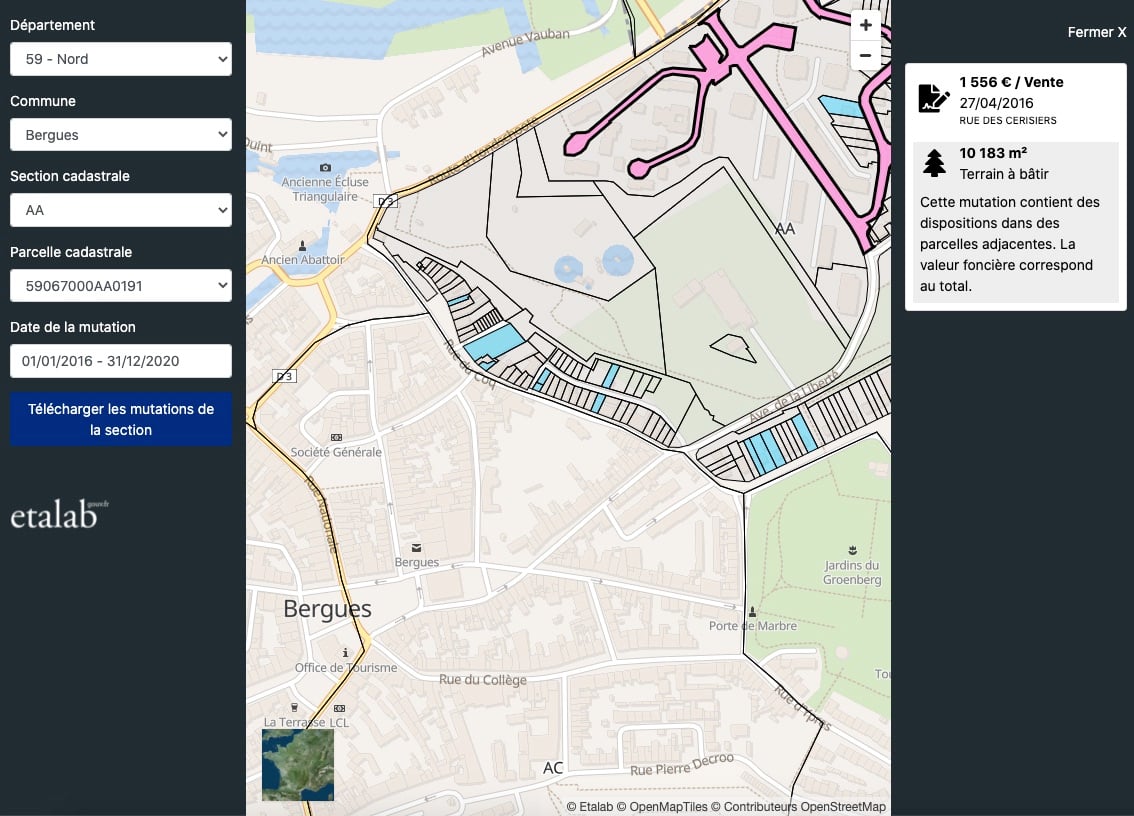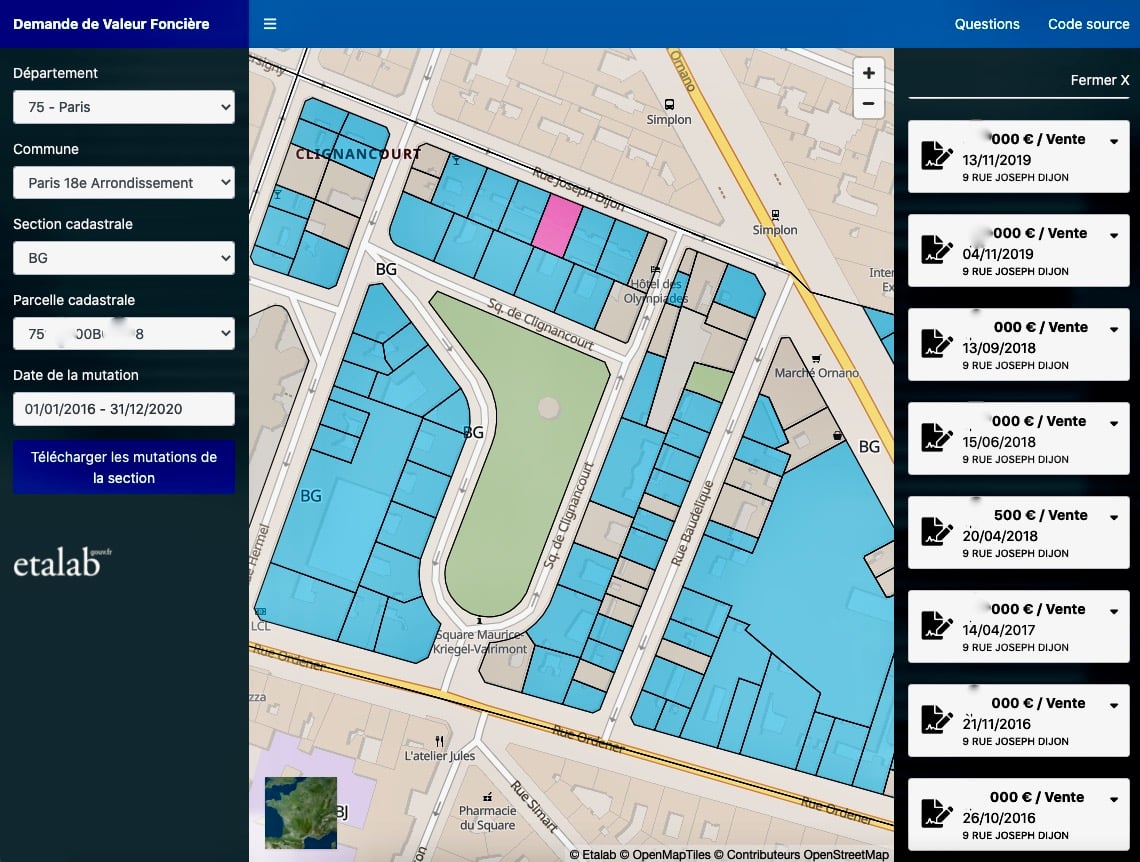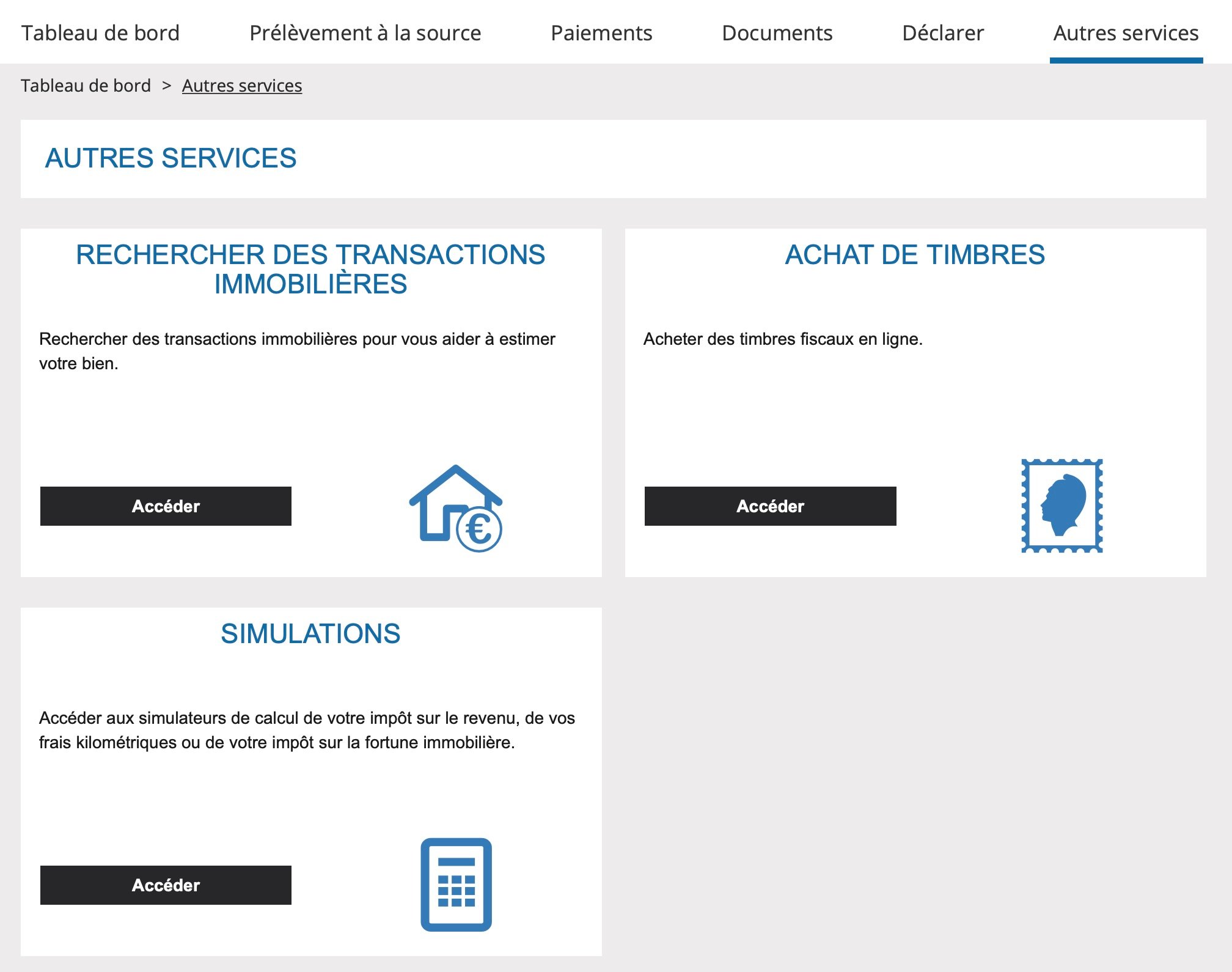What salaries do residents of your municipality receive? Are they owners or tenants? How much did they buy their home? Review of 3 public and perfectly legal tools that allow you to gauge the lifestyle of your neighbors, using them with more or less confidentiality.
1 Gauge the lifestyle in your city
The least intrusive of the three tools mentioned here, but not the least informative! Do you want to know everything about the households that live in your town? Go to the page of data by geographical area (complete file) from INSEE: the national statistics institute will draw up a detailed composite portrait for you based on the 2020 census, with data updated in 2023: simply enter the name of your city In search for a geographic area then click on the municipality (COM code if several choices are offered). Example with Saint-Rmy-ls-Chevreuse in Yvelines, in the heart of the Chevreuse valley.
Population, age, businesses, tourism, diplomas, etc.: INSEE analyzes everything! And this with averages, but also figures refined by categories of inhabitants, a history of professions exercised or the composition of families (husbands or not, single-parent families, number of children, etc.).
And the money matters? By focusing on economic and financial data, INSEE teaches you, for example, that 7750 Saint-Rmois, very predominantly active with a job (6.6% unemployed, 5.7% retired), often full-time employees, the overwhelming majority live in their main residence, mainly in T5 houses (5 rooms and more) built before 1990, but 80% of them work in another city. With a median annual income of 34,300 euros (1), 79% of Saint-Rmois households pay income taxwhich is very much higher than the national average (around one in two households according to INSEE).
Alone 5% households are considered poorand the share of executives increases over the years (pictured below). THE hourly wage for men over 50 is 41 euros, compared to 27 euros for women in their 50s. And the income from savings and real estate assets represents 12.5% of the income of Saint-Rmois. This extremely fine cost portrait, you can get it for all French cities!

obviously, if you live in Paris or in a large metropolis, the large population will not offer you the same degree of detail about your neighbors… Even if, in a city of nearly 150,000 inhabitants such as Nmesthe INSEE tool still teaches you that the unemployment rate is around 13%, that assets are overwhelmingly employees or intermediate professions, or that only 40% of households pay income tax. INSEE considers 29% of people in Namibia to be poor, while 14.5% of French people live below the poverty line (1,158 euros per month).
Where fifty-year-old men in Saint-Rmy-ls-Chevreuse have an hourly wage of almost 40 euros, Nmois of the same age earn on average 18 euros net per hour. Or even that nearly 60% of Nmois are tenants (39% of owners compared to 58% nationally).
2 How much do housing cost in your street?
Want more precision? Impossible to know everything about your neighbors (Insee is not Big Brother) but the public authorities allow you to know very precisely how much houses and apartments near you are selling for. Two tools offer a high level of detail.
First tool: DVF, for land value request. Enter the department, the target municipality, or even the section and cadastral parcel… You can even refine your search by property sale date (range of transfer dates) Exampleby selecting Bergues in the North if you want to discover the city of Welcome to the Ch’tis: the photo below illustrates a large building plot.

However, the image of this simulation Bergues, in your municipality you can click on all the plots in blue. The plot turns pink, and DVF then details the surface of the landthere living space of the house, the date of sale and his price (the net seller, without real estate agency fees or notary fees).
The same goes for a Paris apartment, as in the following example in the 18th arrondissement, rue Joseph Dijon. Obviously, in the city, for the same address and therefore the same building, the number of recent transactions is soaring (around twenty for one of the buildings on this street, in 5 years). Two limitations: DVF does not indicate the floor concerned by the transaction in a building, and data on Alsace, Moselle and Mayotte are not available for legal questions.

What sales? Transactions carried out until the end of June 2023 are detailed on DVF.
Second tool to find out the details of real estate transactions near you: Patrim. The objective of this tool made available by the tax administration is to help you accurately estimate a property when a sale is approaching, or for example in the event of an inheritance.

No link this time, since you have to access this service by logging into your personal space on impots.gouv.fr: other services section then search for real estate transactions. You will have to show your credentials to access it: indicate your reason (IFI declaration, calculation of APL, tax audit, potential real estate sale, expropriation, donation, etc.). You can carry out a search on a street and its surroundings, and consult the details of the latest real estate sales recorded, in order to be able to compare. Information available for the same transaction: address, date, year of construction of the accommodation, number of roomssurface of the land, useful surface (living space including certain useful annexes such as a cellar, a balcony, etc.) and of course the price of the accommodation as it was registered with the notary (overall price and per m2 in relation to the useful surface area).
Attention! This service being very detailed, you can only access it on a personal basis and on a limited basis: the tax authorities also list the sanctions for misuse (2). And the General Directorate of Public Finances (DGFiP) limits a maximum of 50 consultations per user over a period of 3 months. Beyond that, use is blocked for 6 months. In short, you can access it if you really need to know the details of the transactions… and limit yourself to the DVF tool mentioned above if it is purely a matter of curiosity.
How to find out the price of your new neighbor’s housing
3 When the tax authorities agree to give very precise information
As surprising as it may seem, if you want to know the income that a neighbor declares for taxes… just ask them! This right actually appears article L111 of the tax procedures bookthe implementation of this right being specified in the tax documentation (3).
The trick to knowing the amount of income of your neighbors
Easy as pie? Attention… This individual exemption from income tax secrecy is very strictly regulated!
Who? You can only consult the tax information available for households living in your department of residence (the one where you are domiciled for tax purposes). Only one exception this rule: you can ask the tax authorities about certain tax information about the person who pays you alimony, even if they live far from you.
How? By going, physically, to the premises of the Departmental Directorate of Public Finances (DDFiP) on which you depend, and on which the taxpayer concerned depends (no remote consultation, except in the specific case of alimony). You will have to prove your identity. The user is not required to explain the reasons for his request, specifies the tax documentation, but it must be of a strictly private nature. The applicant must also sign a written request which will be kept by the service.
What information? You will not have access to the details of the income declaration! But the DDFiP can still communicate the name of the taxpayer, the number of tax shares in their household, their reference tax income and the amount of their income tax, as well as the possible application of the capping of the effects of the family quotient .
In short: you can know the overall information, but not the details. For example, it is impossible to know the different sources of income.
What confidentiality? This information can only be communicated by the DDFiP orally: no document can be given or taken away. And the information consulted cannot be disclosed to other people, under penalty of sanctions. The fine incurred in the event of non-compliance with this confidentiality: an administrative fine equal to the amount of taxes disclosed. The sanction increases heavily, in criminal law, if the information is made public (press, internet, etc.): in the event of a complaint from the person whose information was improperly made public, the offender risks a fine of 4,500 euros and up to ‘5 years in prison.
Have you yourself been the subject of such a question from someone living in your department? Possible. The DGFiP has confirmed to MoneyVox that the taxpayer whose information is thus consulted is not informed of the consultation of this information by a third party. Rather unknown, this possibility is nevertheless identified by certain taxpayers since the DGFiP recognizes that this possibility is used occasionally, even if the tax administration does not have statistics on the number of these tax consultations…
What you must remember
Curiosity is a bad fault and, in certain cases, overdoing it can be punished.
- Of the sanctions exist in the event of excessively frequent use or without valid reason for Patrimor in the event of non-compliance with confidentiality following the consultation of tax information from an individual… Services that must therefore be used only in case of real need.
- On the other hand, curiosity is allowed and this without limitation on the tools of INSEE or on the open data of land value requests (DVF).
(1) By consumption unit, i.e. per inhabitant and not per household but by moderating the share of minor residents responsible.
(2) The user is not authorized by the DGFiP to distribute a product composed of all or part of the data from the Search for real estate transactions site, even when mentioning the source. The DGFiP recalls the fines incurred in the event of abuse, including 1,500 euros in criminal charges in the event of use for non-commercial public purposes and 1 million euros in the event of commercial use.
(3) Official public finance bulletin (Bofip-Impts).
